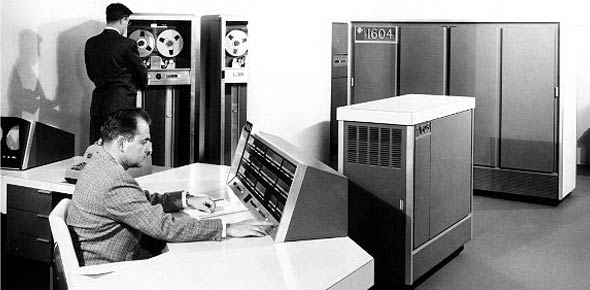(204) When would you use a torque wrench to break loose a bolt?
(204) Before using a dropped torque wrench, you must
(209) Before a power meter can be used, the meter and power sensor...
(202) What is the proper procedure when you are testing a wrist strap...
(211) The VAR control of an oscilloscope must be in the calibrated...
(211) Frequency is determined by the formula
(219) What numbering system is most widely used to allow computers to...
(221) What process in the MIL-STD-1553B, transmits information from...
(224) What type of damage to the test station may result with improper...
(201) When ESDS components are mounted on a circuit board, the
(212) A spectrum analyzer is simply a receiver with the output of
(216) What type of power supply is computer-controlled to produce...
(212) Which control selects how much of the frequency band is...
(218) What device is designed to measure AC voltage, DC voltage, and...
(216) The 60 Hz facility power input to the test station is primarily...
(220) Using the IEEE-488 bus, devices can be linked in either a...
(227) What organization sets national calibration standards?
(228) The CAPRE uses what type of computer?
(202) How often must a wrist strap be tested with a wrist strap...
(203) You must torque a bolt to 60 inch-pounds, but you only have a...
(205) Which is not provided by a TAS?
(209) When calibrating the power sensor, you adjust the CAL ADJ...
(217) The concept of rousing, inciting, or increasing action refers to
(218) Providing a visual display for measuring voltage and frequency...
(201) Triboelectrification is the
(204) You must compensate for the prevailing torque of a self-locking...
(206) In the heterodyning or mixing process, what are the two new...
(208) The power meter
(211) When measuring time on an oscilloscope, multiply the trace...
(223) A computer or instrument with a MXI is called
(223) The MXI bus has two cables; a point-to-point cable and a
(224) What is always the first section of an ATLAS program?
(228) The CAPRE is powered by a(n)
(201) An electrical charge at rest is called
(214) When using a pulse generator, selecting the NORM mode produces a
(201) The electostatic voltage sensitivity of the human body is...
(202) Which is not one of the three principal components of a static...
(203) Which torque wrench uses micrometer-like markings and a rotating...
(209) A power sensor is essentially a
(214) When using a pulse generator, the four control modes allow you...
(215) When using the START FREQ function key on a sweep oscillator to...
(221) The data bus in the MIL-STD-1553B data bus system is made up of...
(201) In an ESD protective area, what level of relative humidity is...
(208) What control compensates for a slight sensitivity associated...
(223) A MXI bus system consists of how many MXI bus devices connected...
(202) It is important for servicable and unservicable (reparable) ESDS...
(202) Proper static drain is fast enough to quickly remove the static...
(211) Each division of the oscilloscope faceplate is
(220) What device, usually a computer with an IEEE-488 board...
(222) Which size(s) of the VXI bus modules is/are the true VME bus...
(225) What type of ATLAS statement does not require the use of the...
(211) The horizontal divisions on an oscilloscope faceplate are...
(220) What is the maximum total cable length specified for the...
(213) What does resolution mean in reference to a frequency counter?
(226) When calibrating ATE, you must consider
(221) Up to how many units or terminals on an aircraft is the...
(221) What is the only device that transmits and command word in the...
(224) What are the two basic fields that make up every ATLAS...
(227) What calibration ratio is necessary to ensure sufficient...
(204) You must compensate for the prevailing torque of a self-locking...
(207) Which radio-frequency component is used to sample an input...
(216) The 400 Hz facility power input to the test station is primarily...
(217) Which signal generator operates in the 20 Hz to 20 KHz frequency...
(222) Which slot of the VXI chassis has special resources such as...
(217) Which signal generator operates in the 1 GHz to 18-GHz frequency...
(219) Overall test station switching can be classed as
(220) How many data lines does the IEEE-488 bus have?
(221) Referring to the MIL-STD-1553B data bus systems command, status,...
(222) Referring the VXI bus, there are two classifications of devices...
(225) Which type of nontest ATLAS statement alters the normal sequence...
(227) In PATEC equipment, what type of standard is a Rubidium...
(223) Using the MXI bus, a computer can be located directly next to...
(226) In a PATEC calibration, which error is not associated with a...
(212) Which peice of test equipment is primarily used to...
(219) The most important test station function is
(221) Referring to the MIL-STD-1553B bus architecture, how many bus...
(221) Which element that makes up the MIL-STD-1553B data bus system,...
(207) The radio-frequency component used to prevent any feedback in a...
(210) Before turning on the power meter, ensure it is
(216) The 115 VAC, 400 Hz facility power input to a test station...
(219) The concept of interconnecting UUT and test station resources is
(212) Before using the spectrum analyzer to make any measurements, you...
(220) What type of interface is the IEEE-488 bus?
(220) The end of identity line, which is part of the IEEE-488...
(220) Each device on the IEEE-488 bus has a unique bus address that...
(210) Measuring relative power on a power meter is useful for
(215) When using a sweep oscillator, the sweep time has an allowable...
(224) What field of an ATLAS statement specifies in great detail...
(225) Which ATLAS test statements generate a signal that can have more...
(220) At the maximum cable length specified for the IEEE-488 bus,...
















